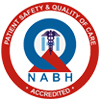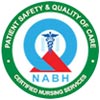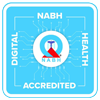
Cardiac Catheterization: When Is It Required?
November 01, 2023
Cardiac catheterization is a procedure used to diagnose and treat certain heart problems. To do this, the doctor puts a long, flexible tube (catheter) into a blood vessel. The doctor then guides the catheter into the heart to find and treat any problems.In children, cardiac catheterization is done by a pediatric cardiologist. This is a doctor who diagnoses and treats heart problems in children. He or she has special training in cardiac catheterization.Why A Child Need Cardiac Catheterization?
A child may need a cardiac catheterization to diagnose a heart problem (diagnostic cardiac catheterization). Or a child may need a catheterization to fix a problem (interventional cardiac catheterization). The problem is often one that he or she was born with (congenital heart defect). Diagnostic catheterization is used less often now. Other tests such as echocardiography, MRI, and CT scans are used instead. A diagnostic catheterization may be done to:- Get a more accurate image of the heart or a heart defect
- Check the flow of blood through the heart
- Find pressures in different parts of the heart and lungs
- Check the heart valves to see if they are working correctly
- Measure oxygen levels in different areas of the heart, lungs, and blood vessels
- Measure electrical activity in the heart
- Check for problems after surgery
- Take tissue samples to be looked at in a lab (biopsy)
- Check the heart before or after heart transplant
- Close an abnormal opening between the 2 sides of the heart
- Close abnormal blood vessels
- Widen a narrow blood vessel or heart valve
- Treat a heart beating too fast or too slow (abnormal heart rhythm)
What Are The Risks Of Cardiac Catheterization For A Child?
Cardiac catheterizations in children are usually safe. But there are some risks, including:- Risks from radiation
- Risks from general anesthesia, if it is used
- Serious drop in body temperature (hypothermia)
- Decreased oxygen levels (hypoxia)
- Irregular heart rhythm (arrhythmia)
- Injury to the heart, heart valves, or blood vessels
- Blood loss, which could require transfusions
- Allergic reaction to contrast dye or medicines, including anesthesia
- Kidney damage from contrast dye
- Stroke
- Death
What Happens During Cardiac Catheterization For A Child?
- The healthcare team will give your child an injection of numbing medicine (local anesthetic) in the area where the catheter is going to be inserted. This is usually the groin. But other blood vessels may be used instead such as the vessels in the neck or bellybutton.
- The doctor will put a special tube (sheath) into the blood vessel. The doctor puts the catheter through the sheath. Sometimes more than one catheter is used.
- The doctor guides the catheter through the blood vessel to the heart. The doctor uses moving X-rays (fluoroscopy) to help see where the catheter is.
- Take blood samples and measure oxygen levels in each of the 4 heart chambers and each blood vessel
- Measure blood pressure in each chamber and each blood vessel
- Inject contrast dye into the catheter and watch the path the dye takes through the heart (angiography)
- Use a balloon to open a heart valve or narrowed blood vessel
- Put a small support (stent) in the blood vessel to keep it open
- Use special catheter tips to fix the walls between the upper or lower heart chambers (atria or ventricles) or abnormal blood vessels
- Use a special catheter tip to open a heart valve with heat
- Use a special catheter to examine and treat abnormal electrical activity in the heart
Recent Blogs
- Factors Contributing to Infertility
- Advantages of Robotic Surgery
- What is Robotic Surgery? Conditions Where Robotic Surgery Can Be Used
- Robotic Surgical Systems
- Types of Robotic Surgeries
- Causes of Male and Female Infertility
- What Is Male Infertility? Treatments For Male Infertility
- Superfoods That Can Boost Your Chances of IVF Success
- 5 Myths Over IVF
- What Are The Do’s And Don’ts For The Embryo Transfer Process?
- What are the different Cardiology Subspecialties?
- What is the difference between Invasive, Non Invasive and Interventional Cardiology?
- What is the difference between Cardiologist and Cardiothoracic Surgeon?
- What Are the Different Types of Heart Surgery and Their Purposes?
- Types of nuclear cardiology tests
2023
- December (6)
- November (8)
- Cardiac Catheterization: When Is It Required?
- Types Of Pediatric Cardiology Test
- Tips For Preventing Heart Problems In Kids
- Advances In The Diagnosis Of Congenital Heart Disease In Children
- Signs Of Heart Problems In Children
- What Is A Pediatric Cardiologist?
- Understanding Congenital Heart Defects In Children
- Pediatric Cardiac Surgery: Types And Considerations
- September (7)
- Lifestyle Changes To Prevent Diabetes
- New Innovative Advances In Diabetes Treatment
- The Link Between Obesity And Diabetes
- Monitoring Blood Sugar At Home
- The Importance Of Regular Diabetes Check-ups
- Understanding Diabetes: Types, Causes, Symptoms & Treatment
- Lower Blood Sugar Naturally: Managing Blood Sugar Through Diet
- August (8)
- What’s The Difference Between A Neurologist And Neurosurgeon?
- Dementia: Causes, Symptoms, Diagnosis And Treatment
- Seizures: Causes, Symptoms, Diagnosis And Treatment
- Epilepsy: Causes, Symptoms, Diagnosis And Treatment
- Is Autism A Neurological Disorder? Causes, Symptoms & Diagnosis
- Pediatric Neurology: Neurological Disorders In Pediatrics
- What Are The Most Common Neurological Disorders?
- Types Of Neurosurgery: Overview, Procedure & Costs
- July (11)
- Types of Cardiac Stents
- Types of nuclear cardiology tests
- What Are the Different Types of Heart Surgery and Their Purposes?
- What is the difference between Cardiologist and Cardiothoracic Surgeon?
- What is the difference between Invasive, Non Invasive and Interventional Cardiology?
- What are the different Cardiology Subspecialties?
- What Are The Do’s And Don’ts For The Embryo Transfer Process?
- 5 Myths Over IVF
- Superfoods That Can Boost Your Chances of IVF Success
- What Is Male Infertility? Treatments For Male Infertility
- Causes of Male and Female Infertility
- April (4)
- March (1)
-

Share with us
Click Here -

Organ Transplantation
Click Here
Copyrights © 2025 PSG Hospitals. All Rights Reserved.








